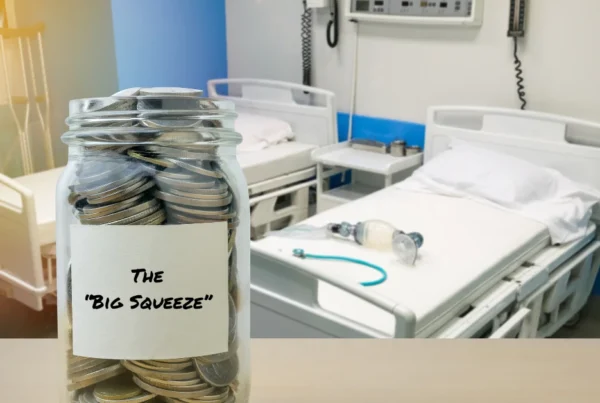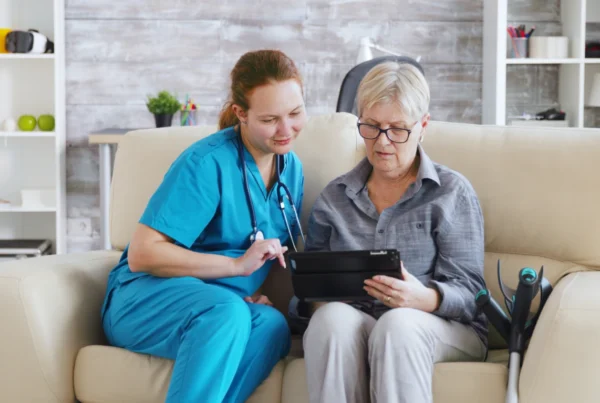
For home healthcare providers, managing equipment rentals is an overwhelming task that can be automated by leveraging the power of a healthcare CMMS. From ordering the right equipment to managing the delivery and pickup process, cycle billing, and beyond, there are many moving parts to manage while providing quality care to patients. Fortunately, a healthcare CMMS will automate these various workflows and ensure everything runs smoothly.
In this post we’ll cover the following topics:
- What Is a Home Healthcare CMMS?
- CMMS Asset Management
- Delivery/Pickup Scheduling and Logistics
- Mobile App/Offline Management
- Vendor Management
- Reporting & Analytics
- How to Choose the Right CMMS
What Is a Home Healthcare CMMS?
A Computerized Maintenance Management System (CMMS) is a software program that helps businesses manage their maintenance operations. It tracks and stores information about repair and maintenance activities, work orders, inventory, personnel, and budgeting, among other things.
Home healthcare CMMS software helps organizations reduce costs, increase efficiency, and improve the reliability and safety of their facilities and equipment. By centralizing operations in one unified platform, a CMMS provides an easier way to keep track of and manage maintenance and rental activities. When it comes to rental activities, this type of program assists with custom forms for patient intake, purchase orders, cycle billing for recurring purchases, delivery/pickup schedules, and more.
A key benefit of using a CMMS is that it enables providers to automate operational workflows. Doing so eliminates the need for excess administrative work, which reduces costs associated with staffing expenses, and frees up resources for other areas within a provider’s organization. Furthermore, automation also ensures accuracy, which is particularly important in the medical field where any mistakes could have serious repercussions for patients’ health and well-being.
CMMS Asset Management
With a CMMS, hospitals and healthcare providers easily monitor and maintain their assets, increasing their efficiency and productivity. A CMMS asset management software is a cost-effective way to ensure that your assets are performing at their fullest capacity and that you are getting the most out of your investments. Here are a few examples of how it works.
- Cycle Billing
- Asset Deprecation Tracking
- Downtime Tracking
- Preventative Maintenace Scheduling
- Purchase Order Management
- QR and Barcode Scanning
Cycle Billing
Cycle billing is a useful tool in managing home medical equipment rentals. It is a process by which an organization bills for the rental of equipment on a predetermined schedule. This allows for the efficient tracking and management of rental charges, and it can be automated using a healthcare CMMS software system.
Automating the cycle billing process, ensuring accuracy, and eliminating manual data entry errors. With a CMMS, organizations can store all patient information in one central database, as well as set up recurring payment schedules that will bill customers automatically at the end of each cycle period. This saves time and effort while providing organizations with full visibility into their finances every month.
Asset Deprecation Tracking
Asset depreciation tracking in healthcare is crucial in helping healthcare organizations stay on top of their equipment maintenance and keep their facilities running smoothly. With the help of a Computerized Maintenance Management System (CMMS), healthcare organizations easily track the depreciation value of their assets and budget accordingly.
Asset depreciation tracking in healthcare helps to identify the equipment that needs to be replaced and provides insight into what the organization is spending on maintenance and repairs. This information is used to make informed decisions about how to best allocate resources for purchasing and maintaining assets.
Medical Equipment Downtime Tracking
With a CMMS, healthcare providers track equipment downtime and identify areas of improvement. Additionally, they monitor and analyze equipment performance to ensure that issues are quickly addressed, and preventative maintenance is properly scheduled.
Preventative Maintenace Scheduling
By regularly checking and replacing parts, staff help minimize the risk of costly repairs or replacements. This type of maintenance is especially important in healthcare settings, where minor malfunctions or issues quickly become major problems if left unchecked.
A CMMS is a great way to manage preventative maintenance schedules, enabling staff to keep track of all assets and their maintenance needs in one place. By scheduling regular maintenance, staff ensure all equipment is running optimally and that any minor issues are addressed before they become a larger problem.
Purchase Order Management
A computerized maintenance management system helps automate this workflow by providing a centralized system that stores all information related to purchase orders, including supplier information, inventory levels, and order status. With the help of a CMMS, healthcare organizations reduce order processing time, minimize paperwork, and ensure accurate and timely delivery of essential supplies and equipment. This allows healthcare organizations to focus their resources on providing quality care to patients – not administrative tasks.
QR and Barcode Scanning
QR Codes and Barcodes are invaluable tools for healthcare providers when it comes to managing equipment. With a CMMS, healthcare providers scan QR Codes and Barcodes to quickly identify and track home medical equipment. This helps healthcare providers save time and money while providing better patient care. By using QR Codes and Barcodes in combination with a CMMS, healthcare providers maximize their efficiency and reduce the risk of errors.
Delivery/Pickup Scheduling and Logistics
Delivery/Pickup scheduling and logistics are of utmost importance when it comes to home medical equipment rental as patients depend on these tools to survive. Some computerized maintenance management systems are designed to help businesses streamline the following.
- Delivery/pickup route optimization using real-time and historical traffic data.
- Driver productivity tracking to enhance performance.
- Scheduling tools to quickly assign drivers, delivery dates/times, and more.
- Real-time status updates to track and monitor every step of the process.
With a CMMS, businesses stay ahead of potential delays and ensure their delivery/pickup operations remain efficient and cost-effective.
Mobile App/Offline Management
It is neither practical nor feasible for care providers and warehouse workers to always have access to a desktop computer. As teams are constantly on the move, whether visiting patients’ homes or bouncing around warehouses, having a CMMS that allows for mobile app/offline management is a necessity. This enables data to be accessed anytime, anywhere, and from any device, while still maintaining one source of truth with real-time information.
Vendor Management
With a CMMS in place organizations effortlessly manage their vendor relationships, and thus ensure the continuous availability of the necessary equipment for the organization to run smoothly and provide patients with the care they need. Some key benefits of using a CMMS for vendor management include PO integrations, vendor performance Metrics, preferred vendor management, vendor part number mapping, and more.
Reporting & Analytics
Reporting and analytics are essential components of any healthcare organization. Using a CMMS, with a few clicks you gain access to an automated reporting dashboard for quick insights on how your business is performing using a variety of performance metrics.
These dashboards provide you with a comprehensive view of the overall performance of your rental operations, including the effectiveness of your maintenance process and the cost savings associated with it. Here are a few of the key benefits you get with automated reporting using a CMMS.
- Asset downtime reports
- Asset insights
- Audit logs
- Capital planning and forecasting.
- Custom dashboards
- Drill down metrics
- Reporting history
- Equipment reliability reports
- Itemized time reporting
- Part consumption reports
- Parts forecaster
- PDF and CSV exports
- Transactions and expenses
- User log-in reports
- Work order insights
Want to Learn More About Automating Equipment Rentals with A CMMS?
Choosing the right CMMS software for your healthcare organization is a daunting task. With so many options available, it takes hours of research and planning to determine which one is best for your organization.
Not all software systems offer the same support to meet the needs of national and enterprise-level providers.
For over 30 years, Wynne Systems has been providing solutions that help enterprise brands identify needs and pain points, as well as develop solutions to revolutionize their healthcare operations.
Let us help you make the right choice for your HME DME software. Get in touch with one of our experts today to learn more.




